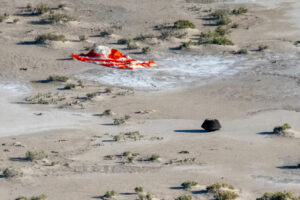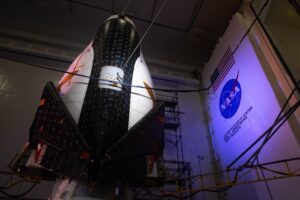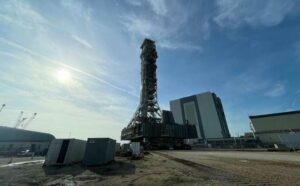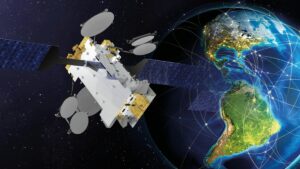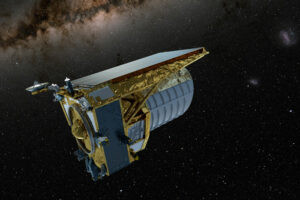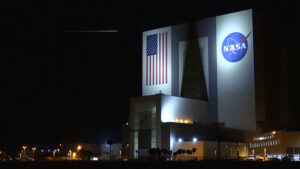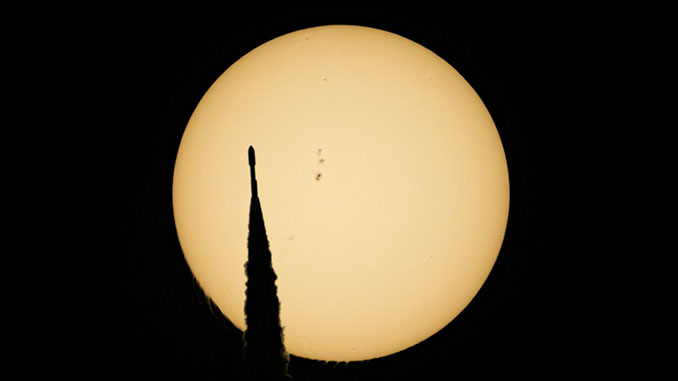
Update: The Atlas 5 lifted off from Cape Canaveral’s pad 41 at 8:47 a.m. EDT (1247 UTC).
Original story:
United Launch Alliance (ULA) is preparing to launch its penultimate national security mission using one of its workhorse Atlas 5 rockets. The mission, dubbed NROL-107 or Silentbarker, is poised for liftoff at 8:47 a.m. EDT (1247 UTC) from Space Launch Complex 41 (SLC-41) at Cape Canaveral Space Force Station.
The Sunday morning launch comes following a one day slip from the planned liftoff on Saturday after ULA discovered what it described as “an issue found during a prelaunch ordnance circuit continuity check” in the lead up to the fueling process.
As of the most recent update from ULA at 4:05 a.m. EDT (0805 UTC), the countdown process was proceeding well, stating that “All systems remain ‘go’ here at the Advanced Spaceflight Operations Center and at the Space Launch Complex-41 pad.”
[embedded content]
Earlier in the morning, they stated that the launch weather forecast was 90 percent favorable for an on-time liftoff.
“A light southerly flow is keeping most of the diurnal shower and storm activity focused over the Gulf Stream in the Atlantic,” ULA said in a statement.
The update tracks with a forecast from the 45th Weather Squadron, which issued its latest weather briefing on Saturday, citing cumulus clouds as the only potential limiting factor to launch from a weather standpoint. As of Saturday, if needed, the 24-hour backup weather forecast shows an 85 percent chance of favorable weather for liftoff.
A ‘watchdog’ in space
The Silentbarker mission has been described as being a “watchdog” of sorts in the geosynchronous Earth orbit, a pocket of space around 24,000 to 40,000 kilometers beyond the surface. In the run-up to Sunday’s mission, National Reconnaissance Office Director Dr. Christopher Scolese said Silentbarker will allow them and their partners at the U.S. Space Systems Command to better track more and smaller objects in GEO.
“You’ve heard about communication satellites moving from one location to an other to provide better coverage for other areas. Certainly, we want to be able to see that, so we know what is going on in that area,” Scolese said during an Aug. 28 press conference. “But we also want to know if there is something going on that is unexpected or shouldn’t be going on that could potentially represent a threat to a high-value asset, either ours or one of our allies’.”
The program went from concept to development over a roughly five-year period. Both the NRO and SSC had overlapping interests in improving their capabilities in the GEO space and forged a collaboration that became Silentbarker.
There’s some discrepancy about the total cost of the operations with a FY2021 Air Force budget document estimating costs to be about $1.19 billion through FY2025 and an April 2023 report from the U.S. Government Accountability Office assessing program costs to be roughly $994 million.
The program will consist of at least two mission launches with the first, NROL-107, consisting of multiple payloads. Officials declined to go into further detail.
“Today, we primarily rely on our ground-based radars. Our ground-based radars are pretty exquisite, but they can pretty much only see about a basketball-sized object in space. And because of the challenges of day, night and weather, it gets extremely hard to maintain custody of those objects,” said Lt. Gen. Michael Guetlein during the Aug. 28 press conference.
“So, by actually moving the sensor into orbit with those objects, we can actually not only detect smaller objects, but maintain custody of them. And when they operate out of the norm, we get indications and warnings that there’s something here.”
Sunday’s launch will also be the last time ULA uses an Atlas 5 rocket is used to launch a mission for the NRO before they transition to their Vulcan rocket. They have one more national security mission aboard an Atlas 5. USSF-51 is expected to launch in 2024 with a more specific date forthcoming.
“It’s our mission that we’re designed for, so it’s kind of a fitting way to end that,” said ULA President and CEO Tory Bruno. “It means a lot to our guys. You’re going to see people with a little tear in the corner of their eye.”

- SEO Powered Content & PR Distribution. Get Amplified Today.
- PlatoData.Network Vertical Generative Ai. Empower Yourself. Access Here.
- PlatoAiStream. Web3 Intelligence. Knowledge Amplified. Access Here.
- PlatoESG. Automotive / EVs, Carbon, CleanTech, Energy, Environment, Solar, Waste Management. Access Here.
- PlatoHealth. Biotech and Clinical Trials Intelligence. Access Here.
- ChartPrime. Elevate your Trading Game with ChartPrime. Access Here.
- BlockOffsets. Modernizing Environmental Offset Ownership. Access Here.
- Source: https://spaceflightnow.com/2023/09/10/live-coverage-most-powerful-atlas-5-rocket-to-launch-on-a-national-security-mission/
- :has
- :is
- :not
- $UP
- 000
- 10
- 19
- 2023
- 2024
- 24
- 28
- 40
- 41
- 8
- 90
- a
- Able
- About
- accountability
- activity
- actually
- advanced
- After
- AIR
- Air Force
- Alliance
- allow
- also
- an
- and
- April
- ARE
- AREA
- areas
- around
- AS
- Assessing
- asset
- At
- atlas
- Aug
- away
- Backup
- BE
- became
- because
- been
- before
- being
- Better
- Beyond
- Billion
- both
- Briefing
- Bruno
- budget
- but
- by
- CAN
- capabilities
- carrying
- Center
- ceo
- certainly
- challenges
- Chance
- Christopher
- collaboration
- comes
- Communication
- complex
- concept
- Conference
- Consisting
- content
- continuity
- Corner
- Cost
- Costs
- could
- countdown
- coverage
- Custody
- Date
- day
- described
- designed
- detail
- Development
- Director
- discovered
- discrepancy
- Display
- document
- dr
- dubbed
- during
- earth
- either
- embedded
- end
- Ether (ETH)
- expected
- exquisite
- extremely
- eye
- factor
- favorable
- First
- fitting
- flow
- focused
- following
- For
- Force
- Forecast
- forged
- forthcoming
- found
- from
- front
- further
- Gen
- get
- Go
- going
- Government
- Government Accountability Office
- Gulf Stream
- had
- Hard
- Have
- heard
- here
- Hidden
- High
- http
- HTTPS
- if
- image
- improving
- in
- indications
- interests
- into
- issue
- Issued
- IT
- ITS
- jpg
- keeping
- Kind
- Know
- Last
- latest
- launch
- launches
- lead
- least
- Lifted
- light
- little
- location
- Lot
- maintain
- max-width
- means
- Michael
- million
- Mission
- more
- morning
- most
- moving
- much
- multiple
- National
- national security
- needed
- night
- now
- object
- objects
- of
- off
- Office
- officials
- on
- ONE
- only
- operate
- Operations
- or
- Orbit
- Other
- our
- out
- over
- pad
- partners
- passes
- People
- percent
- period
- planned
- plato
- Plato Data Intelligence
- PlatoData
- player
- poised
- potential
- potentially
- powerful
- preparing
- president
- press
- pretty
- primarily
- process
- Program
- provide
- recent
- rely
- remain
- report
- represent
- rocket
- roughly
- s
- Said
- satellites
- saturday
- security
- see
- sept
- Shows
- smaller
- So
- some
- something
- Space
- Space Force
- spaceflight
- specific
- standpoint
- stated
- Statement
- stating
- station
- Storm
- Story
- stream
- Sun
- sunday
- Sunday’s
- Surface
- Systems
- that
- The
- their
- Them
- There.
- they
- those
- threat
- Through
- time
- to
- Total
- track
- transition
- two
- u.s.
- U.S. government
- Unexpected
- Update
- used
- uses
- using
- UTC
- Video
- vulcan
- want
- was
- Way..
- we
- Weather
- WELL
- went
- What
- What is
- when
- which
- will
- with
- youtube
- zephyrnet

